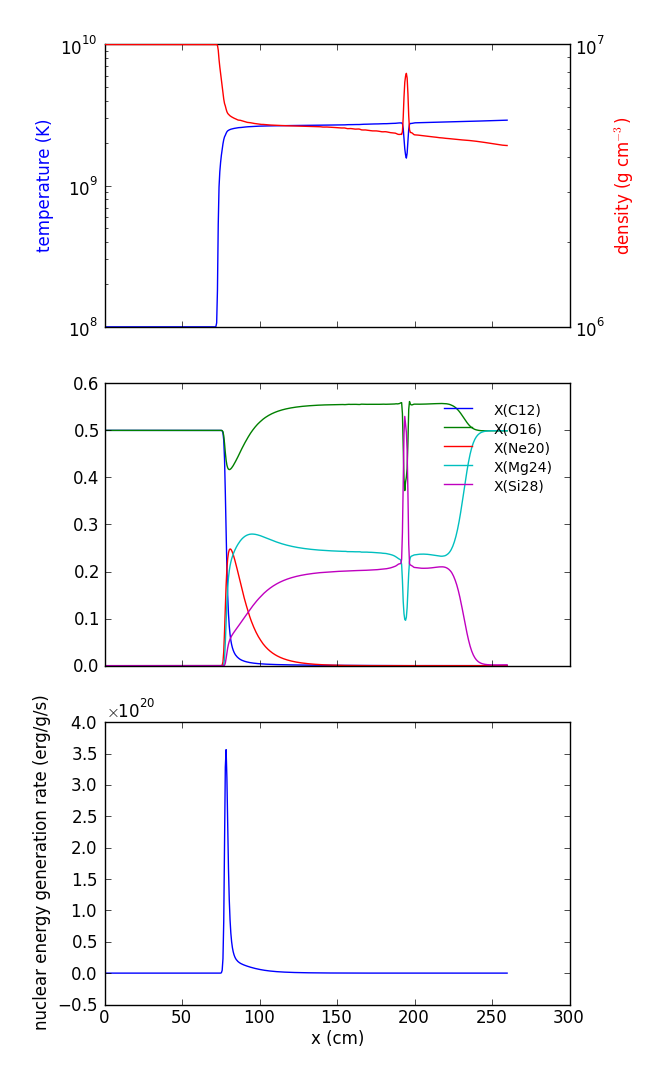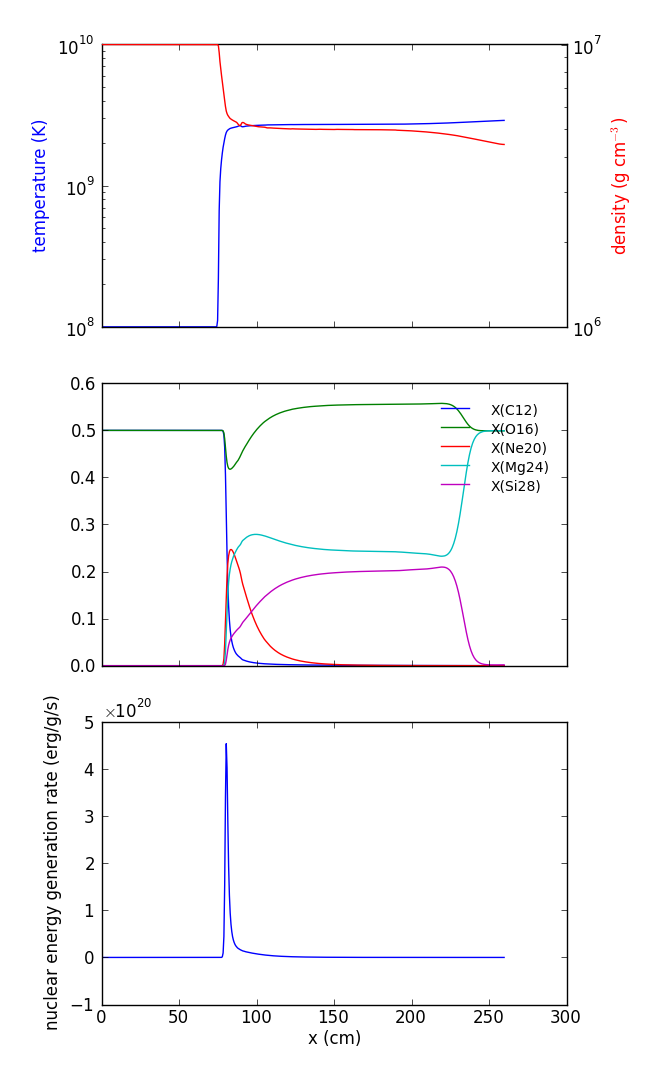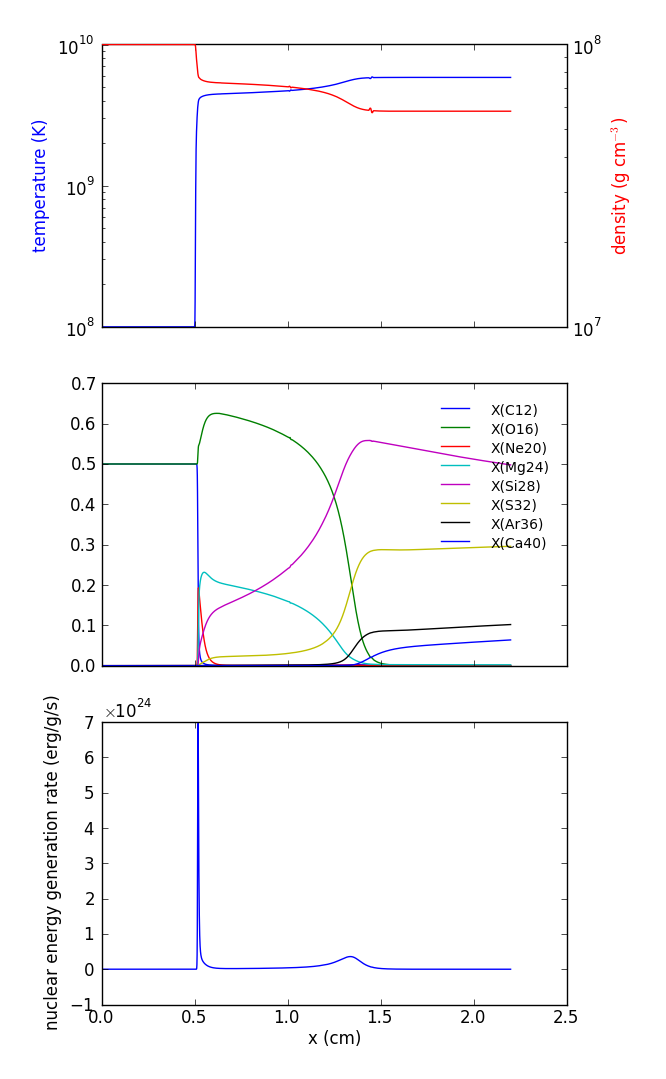Initial study
We were looking to see if the traditional Strang Splitting version of the code would "break" under different circumstances; different resolutions, different densities, different CFL numbers, different reaction networks. Once we found cases that had unphysical kinks in their profiles (see Figure 1), we ran the exact same case with the SDC version of the code (see Figure 2). The SDC code produced more accurate and more efficient results compared to the Strang cases. When running a few SDC cases, we noticed a second bump in the energy generation rate that had not previously been seen (see Figure 3). Determining when this bump occurs, why it occurs and if it has any correlations with other parameters is the subject of this ongoing work.
More in-depth descriptions of Maestro, MESA and the SDC algorithm can be found in these papers:
- MAESTRO: An Adaptive Low Mach Number Hydrodynamics Algorithm for Stellar Flows [IOP]
- Nonaka, A., Almgren, A. S., Bell, J. B., Lijewski, M. J., Malone, C., & Zingale, M. 2010, ApJS, 188, 358
- A Deferred Correction Coupling Strategy for Low Mach Number Flow with Complex Chemistry [doi]
- Nonaka, A., Bell, J. B., Day, M. S., Gilet, C., Almgren, A. S. & Minion, M. L. Combustion Theory and Modelling, 16:6, 1053-1088
- Modules for Experiments in Stellar Astrophysics (MESA) [ads]
- Paxton, B., Bildsten, L., Dotter, A., Herwig, F., Lesaffre, P. & Timmes, F. ApJS, 192, 3
Figure 1 shows a flame using the traditional Strang Splitting method. There is a rather large, unphysical kink in the profile. These kinks disappear when the same case is run with a lower CFL number, indicating there is not a great coupling between the physical processes in the code.
Figure 2 shows the same flame as Figure 1, but with the SDC algorithm. The kink is gone, indicating a better coupling between physical processes.
Figure 3 is an interesting flame run using the SDC algorithm. It has a bump in the energy generation rate far from the burning front of the flame. Perhaps it is associated with the Si28 and S32 burning stages.

Figure 1: A Non SDC flame using low CFL and low resolution. There is a pretty big kink in the flame that should not be there.

Figure 2: Same parameters as Figure 1, only this uses the SDC algorithm. The kink is no longer there, indicating a better coupling between the various physical processes.

Figure 3: More species in the network and run out longer. There is a second bump in the energy generation rate (bottom panel) that emerges.